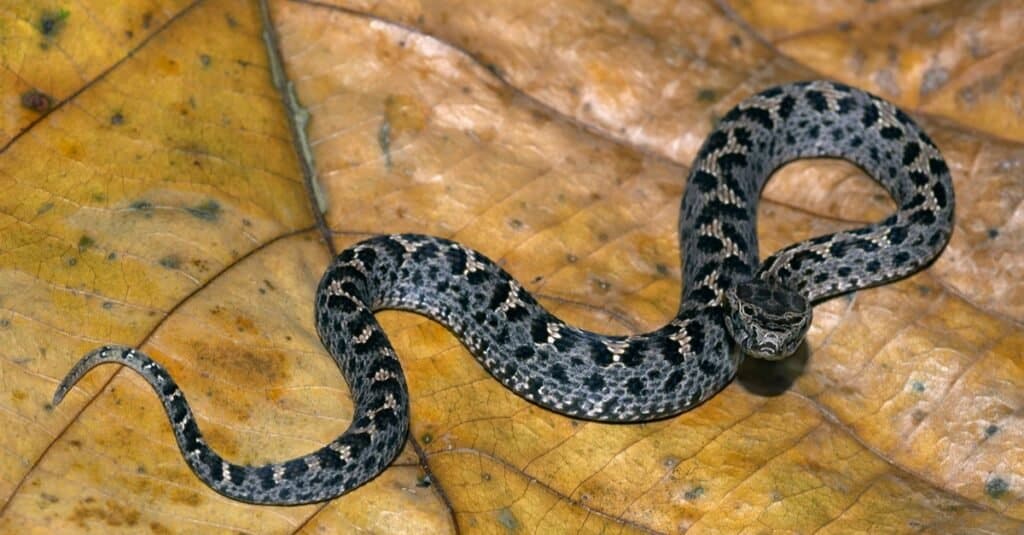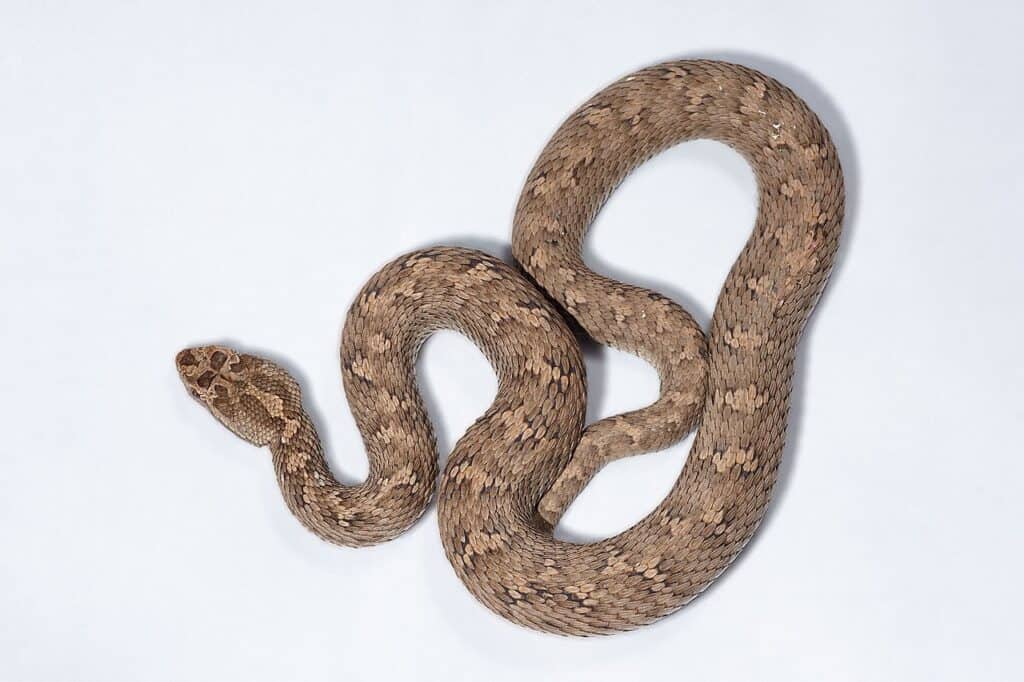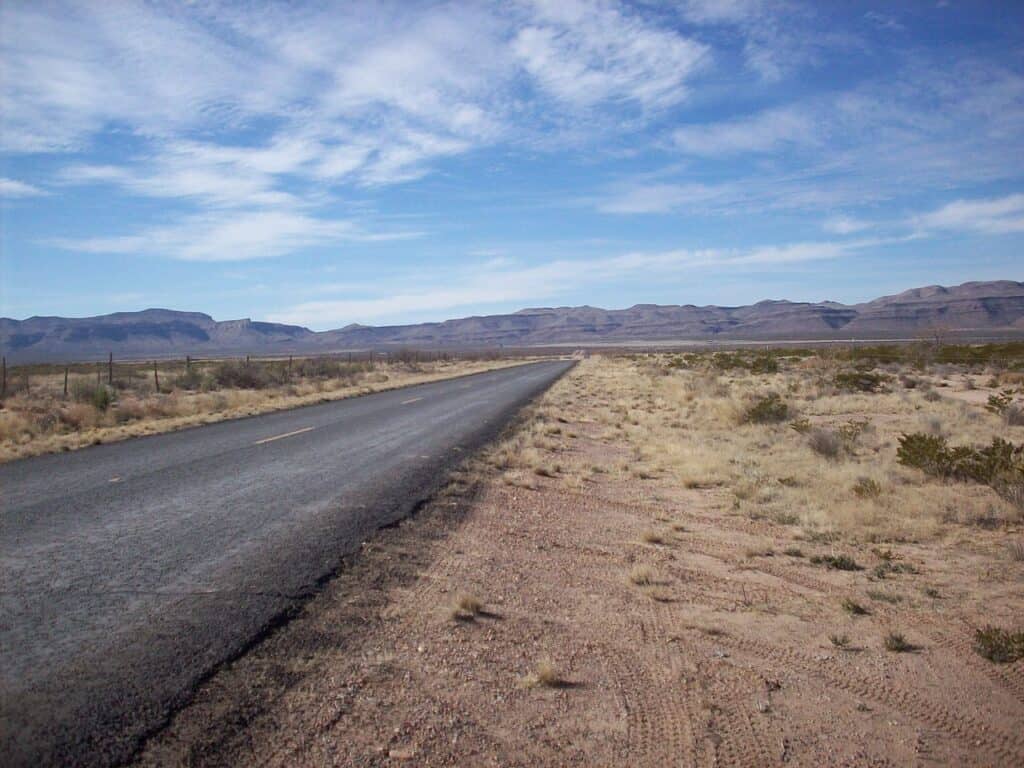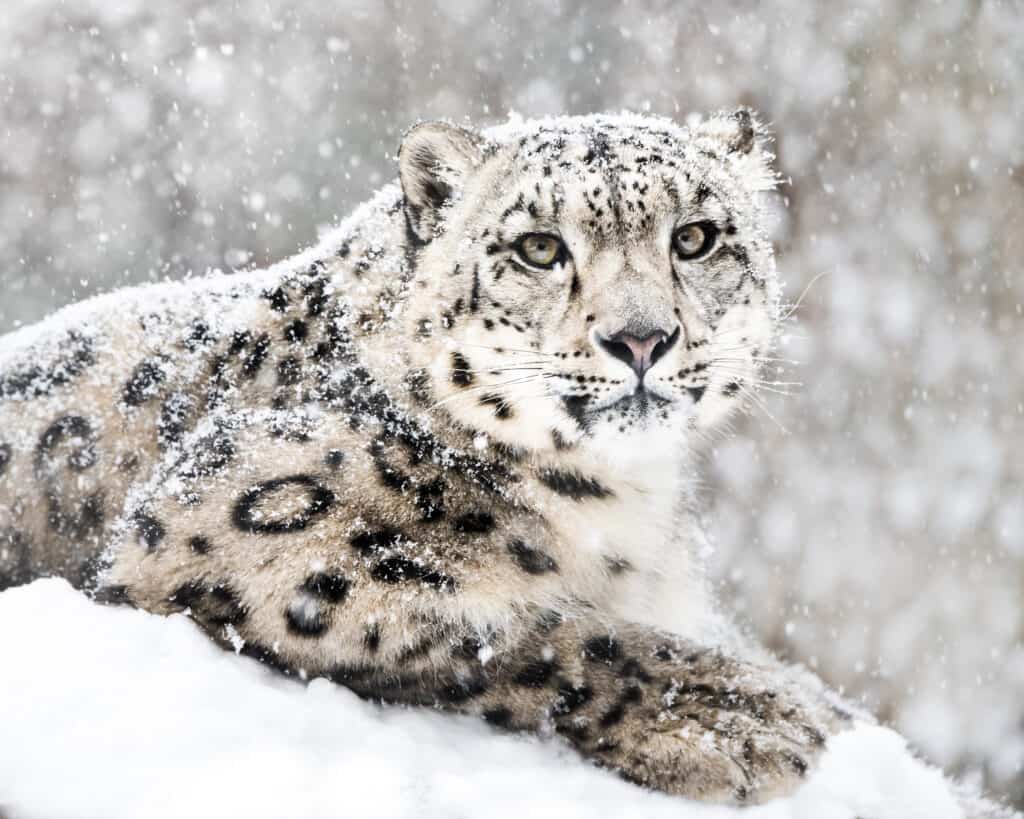Snakes can be found in most places around the world, but they definitely hang out in a few common spots. Jungles, forests, and swamps seem to be the standard “snake places,” and humans are usually happy to avoid them whenever they can.
Still, there is a lot about the animal world that we are still learning, and snakes are a group of creatures that continue to surprise us!
One recent discovery revealed a new species of snake that lives in the strangest place: 16,000 feet up on a mountain.
Let’s learn about the venomous mountain snake that lives 16,000 feet high!
The Venomous, Mountain-Dwelling Snake that Nobody Knew About

This
Himalayan
pit viper is one of the other species of snake that live in high-elevation regions.
©iStock.com/ePhotocorp
A new species of snake named Gloydius rickmersi was recently discovered in the strangest place.
Gloydius rickmersi is a species of viper that belongs to the Gloydius genus, a group of venomous pit vipers that live throughout Asia.
These snakes, commonly known as Asian moccasins, are very similar to moccasins in North America, the copperhead and cottonmouth. Although these species are similar to their North American cousins, there are some distinct differences.
Still, like other vipers, Gloydius rickmersi is a venomous snake that you probably don’t want to run into! When compared to other vipers, G. rickmersi is pretty small, only 20 inches long or so. Additionally, G. rickmersi lives in a really strange place that most people would never think about when looking for Asian pit vipers.
The Strange Story of how G. rickmersi was Discovered

G. rickmersi was found as flattened roadkill, but scientists soon went looking for a living specimen and found it soon after.
©Arthur Tiutenko / CC BY-SA 4.0 – License
Like most discoveries, finding G. rickmersi was a total accident. Philipp Wagner, a scientist with the Bavarian State Collection of Zoology, was out in Kyrgystan when a strange specimen was found.
The carcass of a snake that had been run over on a remote highway in the mountains had been discovered, and nobody knew what it was. Once the team realized this was a potentially new species, they went looking.
“The first one we found was roadkill and it was really, really flat, so we weren’t able to identify it, but the second specimen, that was alive,”
Phillip Wagner
Soon, they found a living (and much more intact) specimen that wasn’t flattened. What was strange about the entire event was that the snake was discovered in a place that usually didn’t have reptiles. The cold, inhospitable environment of the mountain deserts generally isn’t the hot spot to find reptiles. In fact, only around 12 different reptiles are known to live in the region.
“Only around a dozen reptile species are known here,” he adds. “The period when animals can breed is only three or four months a year. It was two weeks after we got the snake that we had the first snow, and that was in September.”
Phillip Wagner
Generally, reptiles live below 9,800 feet because of the temperatures. Incredibly, the snake was found at an elevation of 16,000 feet, much higher than is normal.
Wagner has already found other species in the region and believes them to be extremely under-reported. There are around six related species that live across Central Asia, Russia, China, and Mongolia.
How Does G. rickmersi Live in the Cold?

Warm roads attract cold-blooded reptiles looking for a place to warm up.
©Fortguy / CC BY-SA 3.0 – License
There is still a lot of mystery surrounding G. rickmersi. However, researchers believe that these snakes are able to survive the cold due to their smaller size. When compared to other pit vipers, G. rickmersi is much smaller than all of them.
In fact, G. rickmersi is only 20 inches long at the max, allowing its body to heat up much faster than other reptiles. The only problem with a snake that can heat up really fast is that it’s drawn to warm places, especially roads. It seems that the survival strategy of the snake doesn’t work too well with human infrastructure.
“The number of fresh roadkills was very high in relation to the few cars driving around. Probably it was a bit warmer there on the road, and as it was late in the year, this was enough to be attractive.”
Phillip Wagner

Snow leopards are rarely seen in the wild and are native to Kyrgyzstan.
©Abeselom Zerit/Shutterstock.com
Kyrgyzstan is Home to Unique Wildlife
The stunning, harsh mountains of Kyrgyzstan are home to unique wildlife able to dwell in difficult, cold conditions. One of the most prominent of these tough animals is the beautiful snow leopard. This reclusive cat has a tail almost as long as its body, broad paws with extra fur padding, and a snowy spotted coat that provides perfect camouflage.

Snow leopards prey on the little Great Jerboa.
©reptiles4all/Shutterstock.com
Snow leopards prey on Great Jerboa, which, unlike its name, is actually a small desert rodent that hops around the steppes of Central Asia like a tiny kangaroo. Another cat native to the area that preys on the little Jerboa is the Pallus cat. This mountain cat is about the size of a domestic cat but looks larger because of its thick fur with its uniquely “blow-dried” look.
Marco Polo sheep are also native to the area and are the largest of all species of sheep. These gorgeous sheep sport huge, curled horns that are prized by hunters and have led to their endangered status.

One of the smallest cats, the Pallas’ cat, has the longest and densest fur of any cat – which is much needed in Kyrgyzstan.
©slowmotiongli/Shutterstock.com
The photo featured at the top of this post is © iStock.com/Shoemcfly
Discover the "Monster" Snake 5X Bigger than an Anaconda
Every day A-Z Animals sends out some of the most incredible facts in the world from our free newsletter. Want to discover the 10 most beautiful snakes in the world, a "snake island" where you're never more than 3 feet from danger, or a "monster" snake 5X larger than an anaconda? Then sign up right now and you'll start receiving our daily newsletter absolutely free.
Thank you for reading! Have some feedback for us? Contact the AZ Animals editorial team.






